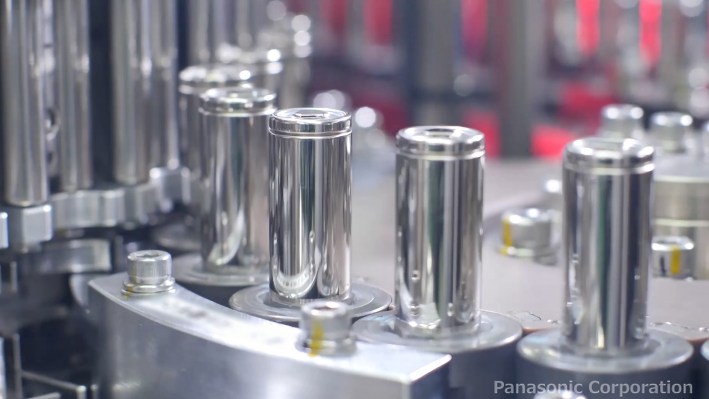Solid-state batteries might get a lot of press, but they’re still years away from powering an EV near you. But it appears a breakthrough is just around the corner: silicon anodes.
A number of companies have been racing to commercialize silicon anode battery technology, which promises double-digit-percent increases in lithium-ion cell energy density based on today’s chemistries.
One such company, Sila, today said it has signed a deal to supply Panasonic with its Titan Silicon anode material. Production will happen at Sila’s future Moses Lake facility, where the startup recently broke ground.
The supply agreement marks a significant milestone for the 13-year-old company, which has raised over $900 million to date, not including a $100 million Department of Energy grant announced in October 2022 that was earmarked for scaling up manufacturing.
“In these early, early years, as we scale up, we’ll sell our material such that the batteries have a small premium, a few percentage points more expensive for higher performance,” Sila’s co-founder and CEO, Gene Berdichevsky, told TechCrunch+.
Higher performance cells containing Titan Silicon will initially be used in luxury vehicles like the Mercedes’ electric G-Class SUV, which is scheduled to debut in 2025. Because cells with silicon anodes hold more energy, automakers can either use the same number of cells for greater performance or opt to maintain the same performance but use fewer cells. “Toward the end of the decade, that higher performance will actually lead to lower price at the battery pack level,” Berdichevsky said.
The silicon anode space doesn’t have a lack of companies building on the tech, and Sila competes with companies like Group14 and Amprius Technologies. But Berdichevsky feels traditional graphite anodes are the true competition to his company. “Delivering the best anode material in the world is meaningless if you’re not higher performing and economical compared to graphite. That’s what we’re all competing against.”
Sila and its peers are likely to see a surge in interest in the wake of China’s recent decision to include graphite in its critical mineral export controls. The country controls 75% of the synthetic and natural graphite supply chains, according to Benchmark Mineral Intelligence. China hasn’t cut supplies yet, but graphite prices have inched upward already.
The Inflation Reduction Act provides another reason for battery manufacturers to look for graphite alternatives. For EVs to be eligible for the full $7,500 tax credit, automakers not only have to build their batteries in North America, but they also have to source the necessary minerals from the continent, or from a country with which the U.S. has a free trade agreement.
Currently, that does not include China, and given the country’s stranglehold on the graphite market, it’s likely that manufacturers are weighing all their options. Sila’s technology could replace 80% to 100% of the graphite in an anode, Berdichevsky said.
Sila aims to produce 1 million vehicles’ worth of anode material at its Moses Lake facility by 2028, and the Panasonic deal helps guarantee a buyer for a significant portion of that output, though Berdichevsky declined to say how much. Today, Panasonic is the largest lithium-ion battery producer in North America.
The deal also should help the company secure further funding to bankroll its expansion plans. Large, first-of-its-kind projects like Sila’s Moses Lake plant, have become harder to finance because of higher interest rates.
“When the risk-free rate is higher, it’s harder even for equity investors to justify underwriting riskier technology bets,” Berdichevsky said. “I think this certainly gives us momentum to break through that.”
The company may not have to rely entirely on equity investors, though. The Department of Energy’s Loan Programs Office is a likely source of financing. Berdichevsky said that Sila is in talks with the Department of Energy for a loan to help finance a portion of the factory, though he said the company hasn’t received an award from it yet.
The Panasonic deal also opens the door for other automakers to gain access to Sila’s technology since there’s no restriction on who the manufacturer can sell to. Mercedes still gets first dibs, but things seem to be more open after that.
With silicon anodes, lithium-ion batteries are following a well-worn path in the technology world: While solid-state cells promise breakthrough gains in performance, they’re still a ways off. In the meantime, silicon anodes promise smaller but still significant improvements in just a couple of years. Solid-state may eventually challenge lithium-silicon, but we haven’t begun to fully tap silicon’s potential as an anode material. Sila and its peers still have plenty of road ahead of them.
